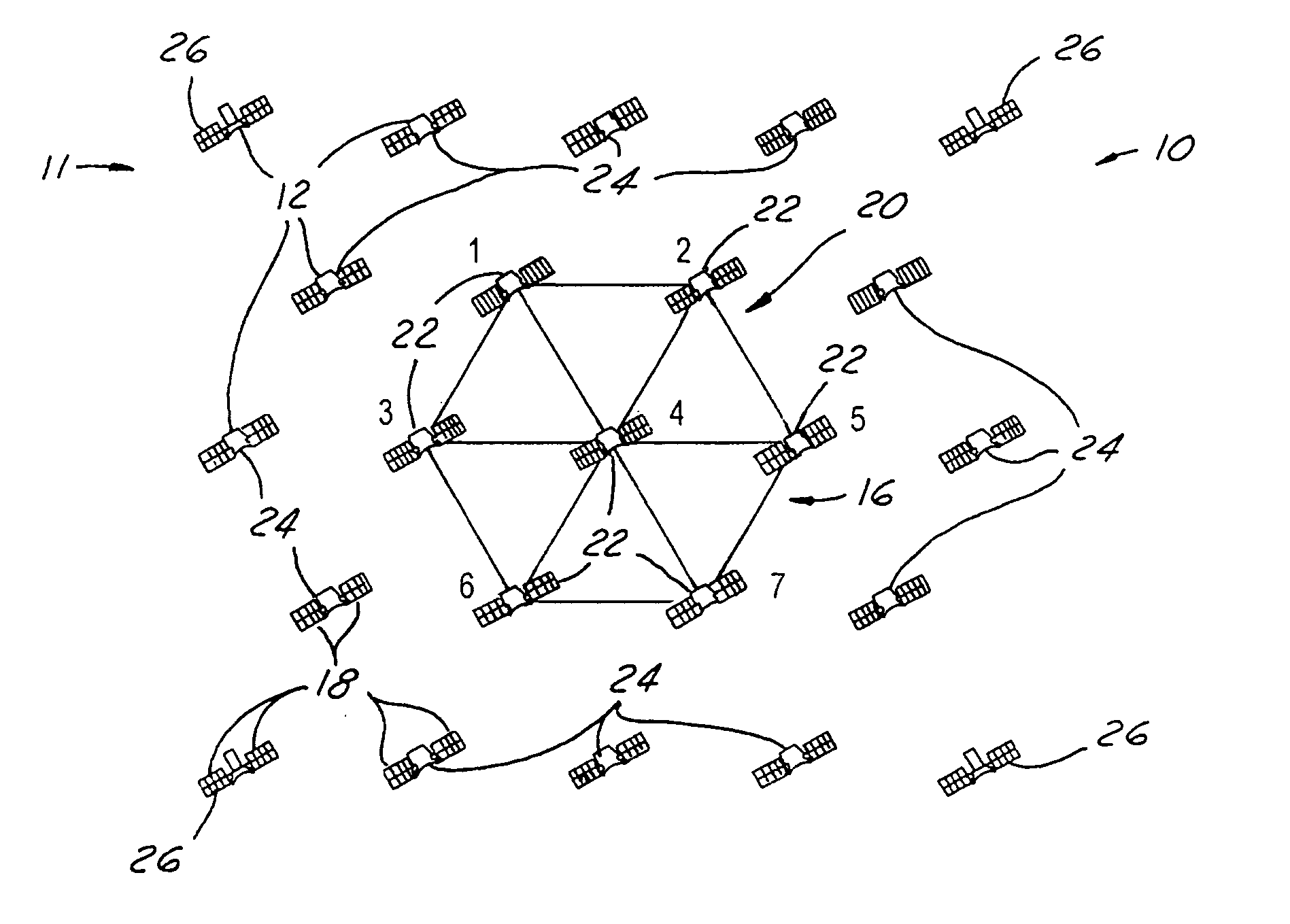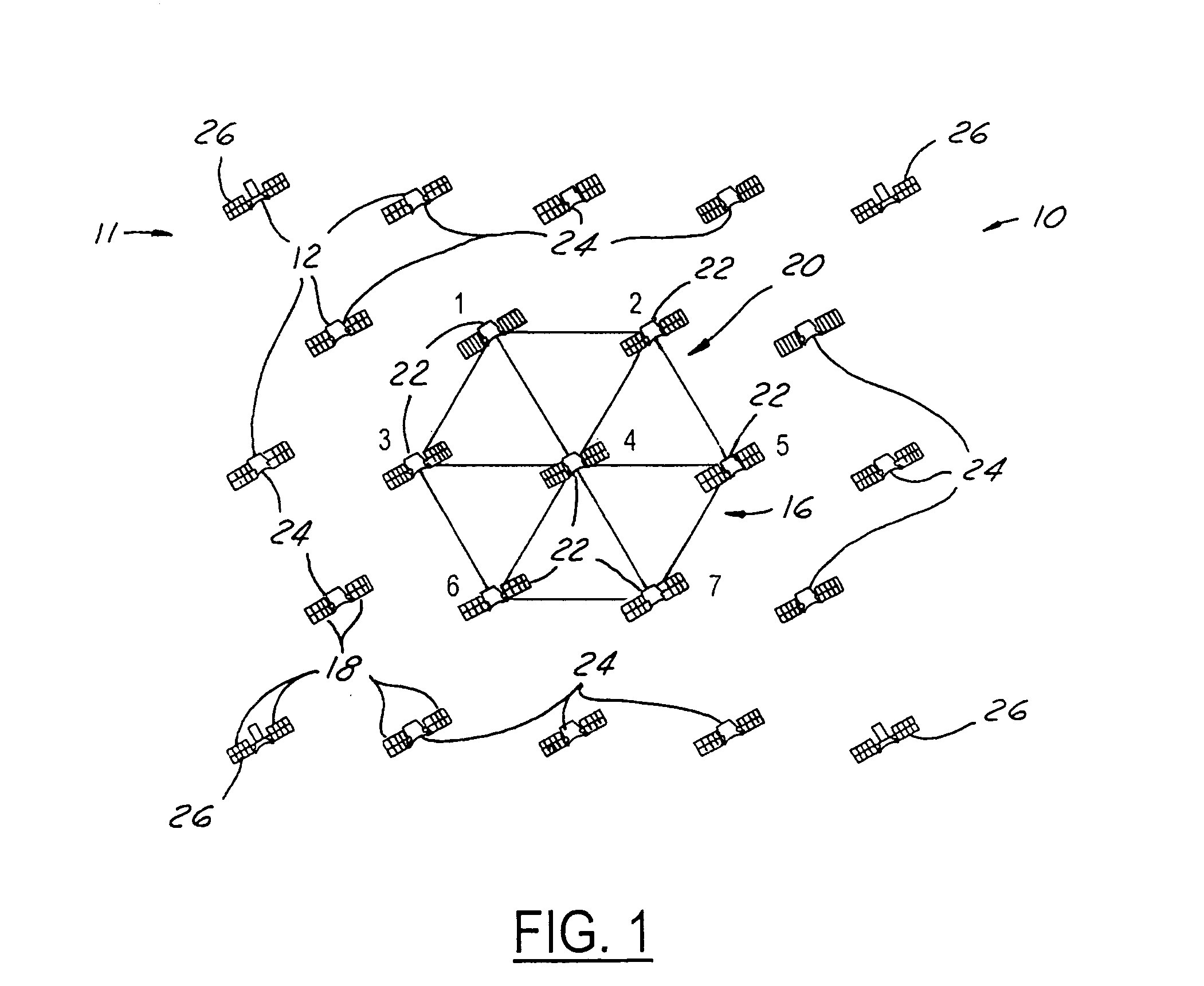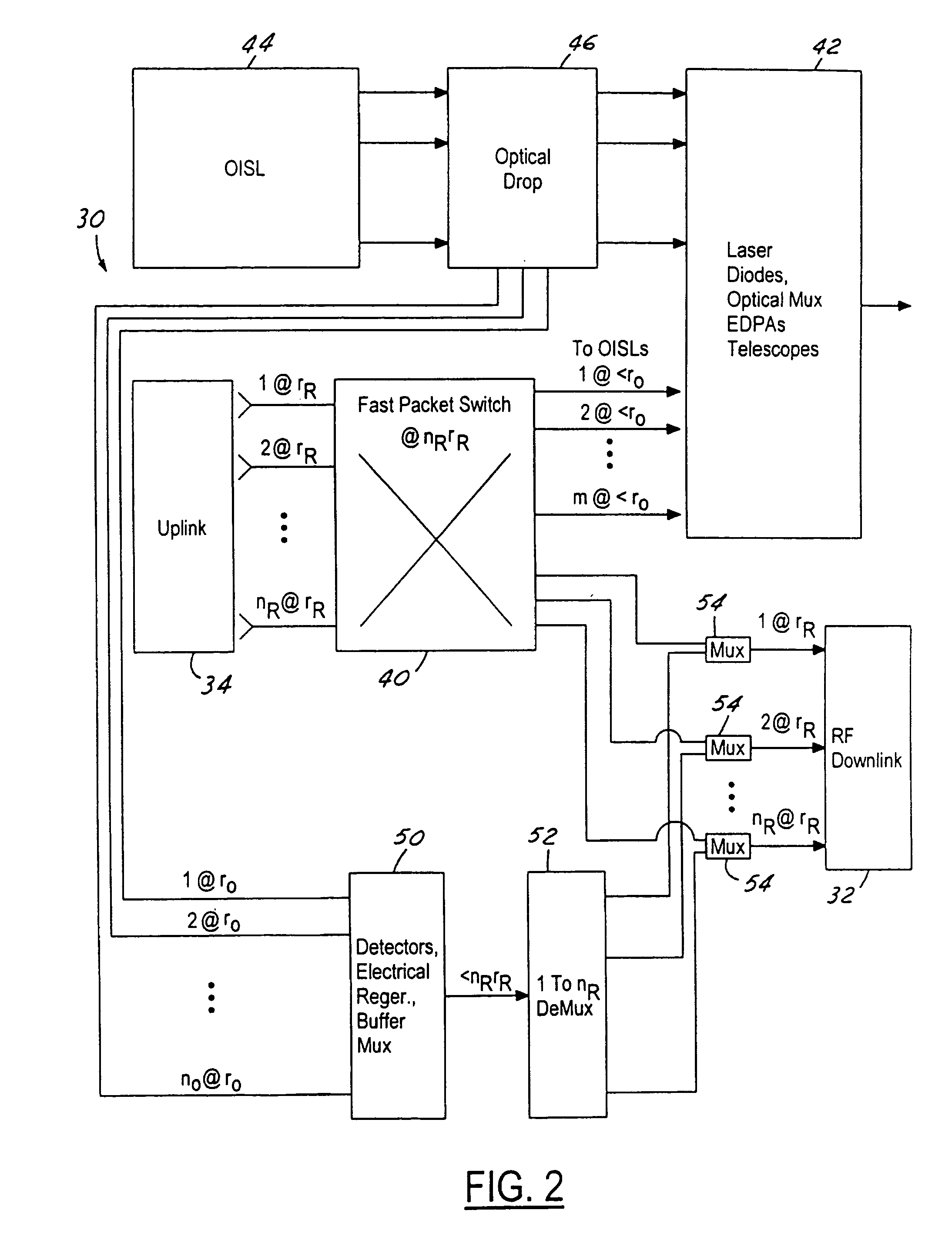Architecture for an optical satellite communication network
a communication network and optical satellite technology, applied in the field of space and communications satellites, can solve the problems of increasing the scarce remaining slots, consuming a significant amount of electric power for high speed switching electronics, and limited growth to higher frequencies, so as to maximize the overall data handling capacity, and maximize the maximum utilization of rf ground channels
- Summary
- Abstract
- Description
- Claims
- Application Information
AI Technical Summary
Benefits of technology
Problems solved by technology
Method used
Image
Examples
Embodiment Construction
[0022]Referring now to FIG. 1, a communication system 10 includes satellite constellation 11 that has a plurality of satellites 12 orbiting the earth. Although not illustrated satellites 12 communicate with other satellites through an optical link and with ground stations (not shown) in a conventional manner. Although this invention may be used for other satellites in other types of orbits, this invention is particularly suitable for satellites in LEOs or MEOs. Due to the constant movement of the satellites, FIG. 1 is a snapshot of a portion of constellation 11.
[0023]Satellites 12 form a network 16. Network 16 is essentially a local area network (LAN) within satellite constellation 11. Each satellite 12 receives and transmits radio frequency (RF) communications to earth by way of antennas 18. As will be further described below, each satellite 12 may communicate with an adjacent satellite in network 16 using optical signals. Because satellites 12 are spaced apart with respect to the ...
PUM
 Login to View More
Login to View More Abstract
Description
Claims
Application Information
 Login to View More
Login to View More - R&D
- Intellectual Property
- Life Sciences
- Materials
- Tech Scout
- Unparalleled Data Quality
- Higher Quality Content
- 60% Fewer Hallucinations
Browse by: Latest US Patents, China's latest patents, Technical Efficacy Thesaurus, Application Domain, Technology Topic, Popular Technical Reports.
© 2025 PatSnap. All rights reserved.Legal|Privacy policy|Modern Slavery Act Transparency Statement|Sitemap|About US| Contact US: help@patsnap.com



